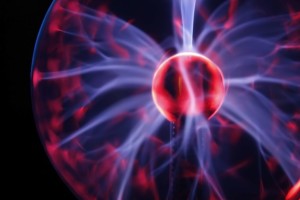What Is Plasma Matter State
The tip of a welder’s torch glows like the Sun and fires out a concentrated blast of heat in excess of 3,000 degrees Celsius (5,430 degrees Fahrenheit). Its UV rays are so harmful that welders wear dark face plates to protect them from ‘arc eye’, a painful burning of the cornea. The source of the intense glow is an ionised arc of gas called plasma.
Plasma is the fourth state of matter – along with solid, liquid and gas – and it’s the most abundant form of matter in the observable universe. The Sun is a massive ball of plasma, as is every star and every inch of space between planets and solar systems. On Earth, lightning is our most famous naturally occurring plasma, along with the spectacular auroras at the poles.
Given its abundance, it’s quite surprising plasma wasn’t identified until the Twenties. That’s because electrons weren’t discovered until the late-i9th century, and without an understanding of subatomic charged particles, you can’t understand how plasma works.
 Plasma is formed by superheating a gas. Normally, atoms in a gas move freely, but their electrons are still bound to their nuclei. With enough energy though, electrons pull free of their nuclei, leaving behind positively charged ions. This ionised state is a highly efficient conductor and is the birthplace of plasma.
Plasma is formed by superheating a gas. Normally, atoms in a gas move freely, but their electrons are still bound to their nuclei. With enough energy though, electrons pull free of their nuclei, leaving behind positively charged ions. This ionised state is a highly efficient conductor and is the birthplace of plasma.
The glowing tip of a welder’s torch is really a plasma arc. The torch is attached to a tank of inert gas like argon or helium. Inside the tip of the torch is a tungsten electrode with an opposite charge as the piece of metal being welded. When a high-voltage current is passed through the tungsten electrode, it ionises atoms in the gas stream, converting that current into a white-hot jet of plasma.
The role of ionisation
In a normal state, atoms are electrically neutral, meaning there are an equal number of positively charged protons and negatively charged electrons (neutrons, by definition, are neutral). Ionisation occurs when that balance is tipped by the loss or gain of electrons. If an electron absorbs enough energy, it will escape from its atomic orbit, leaving behind a positively charged ion. Sometimes these free electrons have sufficient energy to enter another atom’s orbit, which is how negatively charged ions form.
Can water ever turn into plasma?
Water is the only substance on Earth that occurs naturally as a solid, liquid and gas. With water, each state of matter is accompanied by a related phase transition. Liquid water freezes to become a solid and boils to become a vapour. But is there any phase transition that could ever turn water into a plasma? Not exactly. Whether as ice, liquid water or water vapour, water retains the same molecular structure: H2O.
For water to become a plasma, the individual hydrogen and oxygen atoms would need to be broken apart and ionised separately. And if the molecular structure is broken apart, then water is no longer water. An elemental gas like hydrogen can transition between gas and plasma and back to gas. But once water molecules are split apart and ionised, those disparate atoms will not naturally return back to a water form.
